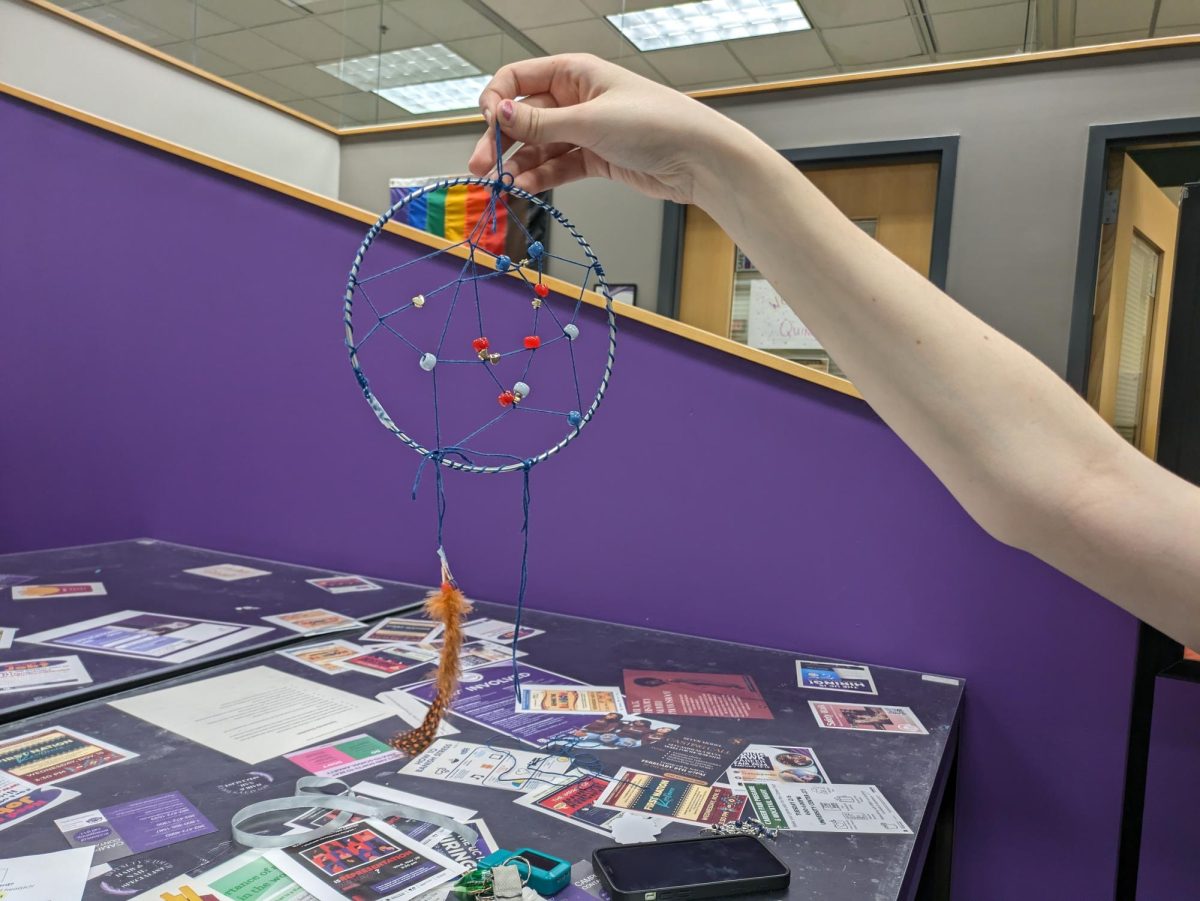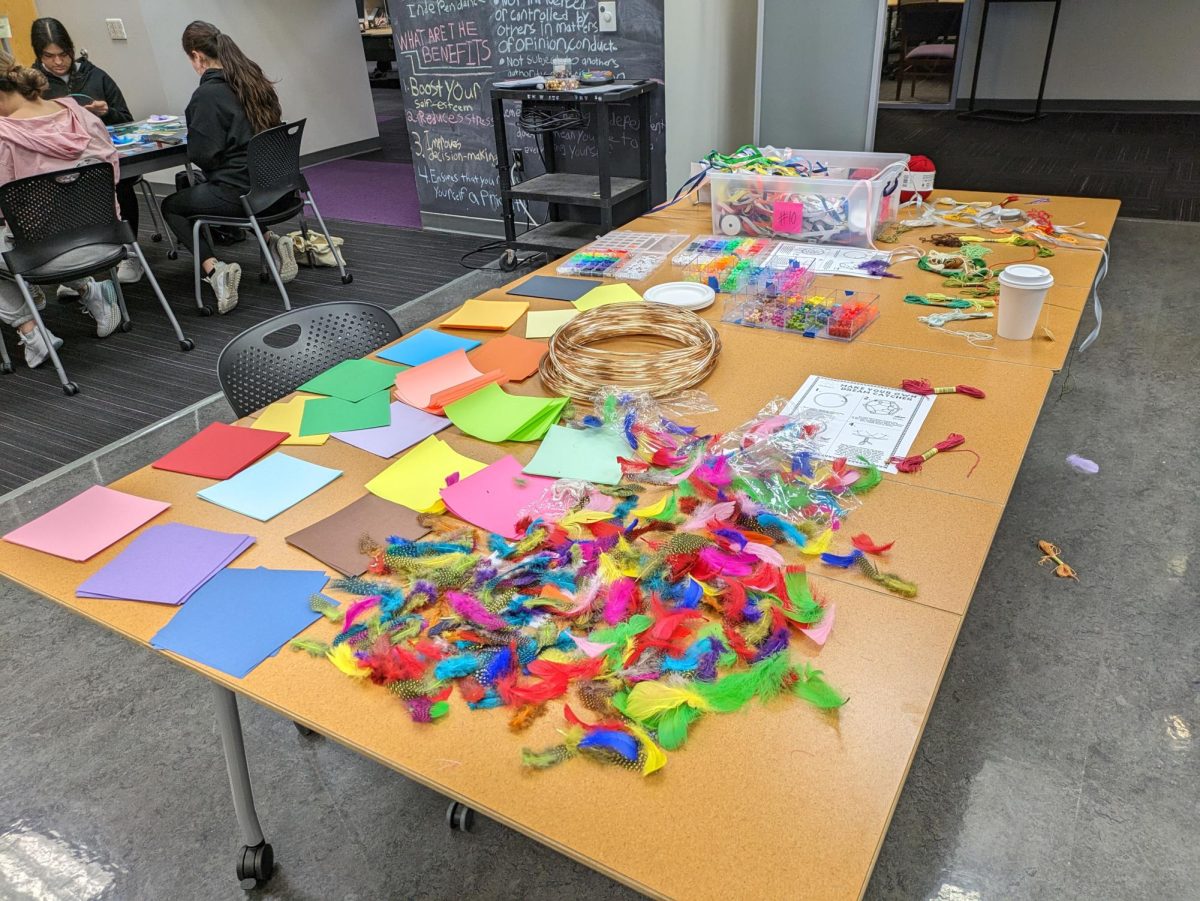Like many Wisconsin cities and universities, Whitewater is covered by a thin blanket of First Nation iconography, cultural influence, and historical artifacts. Ma’iingan Hall takes its name from the Ojibwe word for wolf, the 162 W. Main building has its walls adorned in old photographs of native people along with short descriptions of them. This past Tuesday night at the Connection Center, the UC Live group held a chandelier and dream catcher crafting event for students.
The event involved a short description of the history of dreamcatchers, their meaning, and some of the legends surrounding its origin such as the Ojibwe parable of Asibikaashi, the spider-woman, the alternate Ojibwe story of the grandmother, her grandson, and the spider, and the Lakota tale of the leader who met the trickster Iktomi.
The UC Live event was a way for students to build their own dream catchers while simultaneously learning about its history.
“Not a lot of people knew what the cultural background of the dreamcatcher was,” UC Live employee Logan Carter said. “So to teach all of these people about something that’s really cool is what made it.”
He added that it also served as a nice decoration for students to hang in their dorms.
“I like how they showed the history behind it because I like the history behind dream catchers,” Fleuretta Phipps, a student in attendance, said.
She then mentioned that she had always been interested in the spiritual practices of some native groups and even did a research study on some native tribes in Wisconsin.
“I just really like how in tune with the Earth they were and the different beliefs they had with it as a whole is really interesting when you finally go deep dive,” Phipps said.
Despite the apparent genuine interest in the story and meaning of the dream catchers expressed by students and the intent from UC Live to accurately represent said history and meaning, there were some students who expressed feeling slightly conflicted over participating in the event.
“I just find it a little bit silly they were like ‘don’t buy it from Amazon or anything’ and then they gave us these,” said student Avery Sears who held up a metal dream catcher keychain and the materials used to create her own dream catcher.
Her friend, Alyssa Monaco, agreed, “I knew that you shouldn’t buy from non-native artists, but I think it is a little bit funny that they said don’t buy this from white artists but then they gave us supplies to make them.”
When asked how they felt about displaying their dream catchers at home, Monaco stated, “it’s not like I’m trying to create a mockery of the original pieces, it’s more so a crafty endeavor.”
Sears added, “I know the backstory, I feel like I’m being respectful, and I’m not making money off of it, so I feel fine about it.”
Regardless, the large number of students in attendance seemed to enjoy the additions to the rooms and many even expressed interest in finding more native voices, history, media, and so on.


